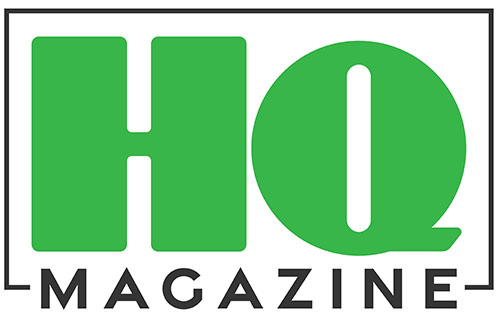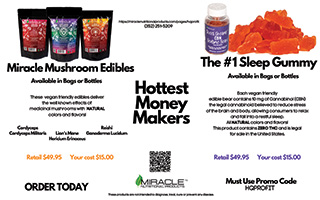Are the Social Networks Loosening Up on Cannabis? Yes, But No—But Also, Yes
For over a decade, social media platforms like Facebook, Instagram and Twitter/X have been vital tools for marketers to build their audience and promote their products. The counter-cultural space, however, has been largely left out in the cold. Despite the massive legal and social strides made by cannabis over the past decade, social media has maintained strict regulations around the marketing of the plant and its derivatives, putting entrepreneurs in the space at a severe disadvantage.
Historically, major platforms have enforced strict bans on any mention of cannabis, CBD or related substances in advertising. Rigorous policies against cannabis-centric content have led to profile deletions, shadow banning and reduced visibility through algorithm manipulation. These actions are not just a mere inconvenience; they represent a significant hurdle for legitimate businesses.
The Platform Formerly Known as Twitter: Yet Another X That Sends Mix Messages
While the platform’s updated advertising policies allow for the showcasing of packaged cannabis products in legal markets, they place a restriction on the direct promotion of the sale of cannabis. Essentially, this means advertisers are permitted to promote their brand and inform consumers about their products but cannot directly facilitate the purchase of cannabis through the ads.
For example, a company could advertise its brand of cannabis products, focusing on aspects like packaging or variety, and direct consumers to their website for more information. However, they can’t use Twitter/X ads to explicitly sell cannabis or to provide pricing and purchasing options.
However, recent developments suggest an evolving paradigm, with users reporting a noticeable increase in CBD, Delta-8 and even psilocybin mushroom ads infiltrating their feeds. So, what exactly spurred this change, and how can smoke shops and cannabis dispensaries capitalize on this newfound opportunity?
A pivotal tipping point occurred with Meta’s latest update to its cannabis advertising policy, introducing a notable shift in approach. The monster entity, encompassing platforms including Facebook and Instagram, now permits the promotion of non-ingestible CBD products containing up to 0.3% THC, aligning with the federal definition of legal hemp. This significant relaxation of restrictions presents a promising opportunity for retailers. However, this newfound freedom comes with a few non-negotiable conditions; businesses must obtain written approval from Meta, adhere to local laws and refrain from targeting individuals under 18.
But Meta’s revised policy goes beyond CBD products, extending its loosened restrictions to include noningestible hemp products such as fibers and seeds. Retailers no longer need written approval to promote these items, provided they abide by local laws and industry guidelines. Additionally, Meta now permits hemp-related ads that educate or advocate for CBD products, creating new avenues for retailers to connect with potential customers.
Facebook: Beyond the Topical
So, Zuck and his minions have eased restrictions, allowing the advertisement of non-ingestible CBD products—and by non-ingestible, we mean topicals, like lotions or bath bombs. But considering the deluge of ads coming through the platform for all manner of hemp THC products including beverages, gummies, chocolates and even flower, there is still a mystery to be solved here. How are these companies skirting the rules while the rest of us are stuck in Facebook jail?
Policy Enforcement Challenges. The scale of platforms like Facebook (Meta) makes it challenging to catch and enforce all policy violations immediately. Some ads might slip through the cracks, especially if they are subtly worded or if the advertisers find loopholes in the policy wording.
Creative Marketing Strategies. Advertisers might use creative strategies to circumvent the advertising restrictions. This could include using ambiguous language, focusing on the product’s wellness aspects without explicitly stating it’s ingestible, or advertising a brand broadly while not directly mentioning the ingestible products.
Third-party Platforms. Some ads might be placed through third-party platforms or services that have different policies or levels of scrutiny compared to Facebook’s direct advertising platform, leading to a broader range of products being advertised. This is a massive loophole; see the Sidebar 2 for more.
Rapid Reporting and Take-down Process. Even if such ads appear, Facebook’s reporting mechanism often depends on users reporting non-compliant ads, which are then reviewed and possibly removed. They can appear until reported and reviewed, which means some non-compliant ads might be seen by users before any action is taken by Facebook. Additionally, one could speculate that if the ad targets users whose browsing and purchasing habits show openness to such products, the odds of it being reported drop significantly.

While Meta’s move signals a significant step forward in cannabis advertising, challenges remain. Zuckerberg maintains the prohibition on ads promoting THC products or cannabis products with psychoactive components. Ads for permissible CBD products also must avoid making health claims.
Still, Meta’s policy update reflects broader shifts in the digital landscape, aligning it with other social media platforms adapting to the evolving cannabis market. In late 2022, a research team analyzed policies across 11 social media platforms regarding general community guidelines, advertising and drug-related content, specifically focusing on cannabis. The findings revealed that while most platforms prohibit direct cannabis sales, there is less consistency in their approach to cannabis promotion. For instance, while some explicitly addressed distinctions between marijuana and CBD products, others lacked clarity on jurisdictional differences in regulations.
Clearly, the move to allow non-ingestible CBD doesn’t quite explain the deluge of hemp-derived THC products that have shown up on our feeds, seemingly out of nowhere. But the loosening of restrictions does, in fact, widen the cracks through which noncompliant ads can slip. Meta’s “police force” as it were, is admittedly understaffed and thus relies on algorithms, which monitor language. With more allowable language, there is more wiggle room for advertisers willing to play on the edge. See Sidebars 1 and 2 for more information on the how and why of restricted ads slipping through the cracks.
“Reviewing ads from millions of advertisers globally against the advertising standards is not without challenges. Our enforcement isn’t perfect, and both machines and people make mistakes,” the Meta Business Help Center states directly.
If an ad is rejected for not meeting Facebook’s advertising standards, the advertiser can revise it to address the issue. After editing and republishing, Facebook will review the ad again. However, if advertisers are found to be submitting ads that severely or repeatedly violate policies, Facebook may take further action beyond rejecting ads, such as restricting their business or user account from advertising in the future.
Ad Laundering? The Third-Party Loophole
Third-party advertising platforms like Eggroll and Perfect Audience can place ads on Facebook for businesses, even if those businesses can’t directly due to Facebook restrictions. They work by using tools like the Facebook Pixel, which tracks users’ online activity, to retarget ads more precisely on Facebook based on what users do on other websites. This is done through a separate system that connects with Facebook, so businesses can still advertise there without using Facebook’s own ad manager.
Here are a couple third-party advertising platforms that use these techniques:
These platforms have tools and features that might not be available directly through Facebook’s advertising system, allowing for more complex advertising strategies. They nominally comply with Facebook’s rules but operate through a different system, which can sometimes have different oversight and capabilities.
Among the platforms, Tumblr emerged as one of the most sophisticated in regulating cannabis-related content. It not only specified marijuana but also distinguished between CBD and other hemp-derived products, considering jurisdictional differences, and setting a minimum age restriction of 21. Platforms like Facebook, Instagram, Pinterest, Twitch and YouTube exhibited similar policies, recognizing cannabis but failed to acknowledge jurisdictional differences. Ultimately, Enforcement isn’t guaranteed, as violations of platform policies are common. Unclear language regarding “promotion” definitions and enforcement protocols complicates matters, highlighting the necessity for clearer and more detailed policies, especially given the prevalence of user-generated content promoting cannabis use.
Most recently, Twitter/X made headlines for loosening its rules when it comes to cannabis-related ads – both hemp and marijuana. Now, businesses that are verified and operating within state laws can feature packaged cannabis products in their ads. According to a blog post by Alexa Alianiello, who heads sales and partnerships at Twitter/X, certified cannabis advertisers are now permitted to responsibly link to their websites where they promote the sale of CBD, THC and other cannabis-related products.
According to the Cannabis Marketing Association, while Twitter/X advertisers have seen mixed results, it’s important to remember that with any advertising initiative, success depends on the match of the brand and the campaign to the platform — it’s not a one-size-fits-all approach. Alianiello commented in her blog post on how the platform has gathered meaningful feedback from the cannabis industry which they have taken into consideration to create even more clarity and opportunity. For the cannabis business community, that should signal that a cohesive approach to cannabis marketing is possible when taken in incremental and repetitive steps. In the meantime, the best advice for retailers is to hang tight, keep an eye on policy changes, and do their best to play by the rules. Because in the ever-changing landscape of social media, adaptability is key.












